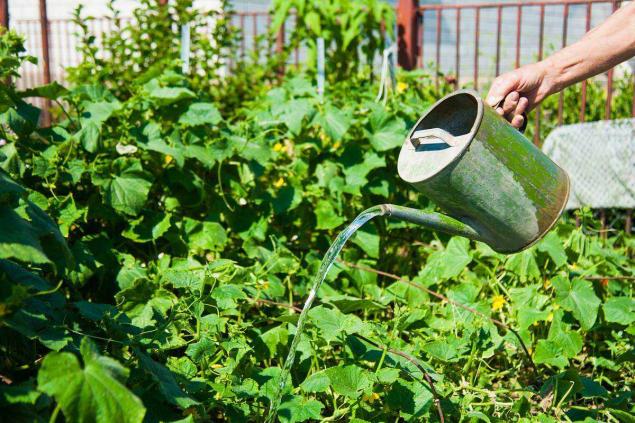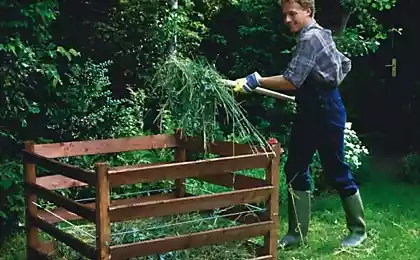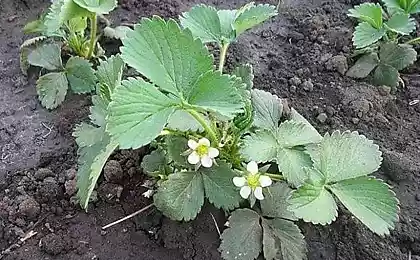185
Table of feeding vegetables for a rich harvest
Nothing pleases a gardener like a good harvest. And if he does not pay half the cost, then agree, it is time to change something. Feeding vegetables is exactly what allows you to radically change the situation.

Timely application of fertilizers compensates for soil deficiencies, enriches the diet of vegetables with minerals, allows plants to form larger and tastier fruits. And so that readers do not get confused in dozens of different sources, we have collected all the information about fertilizing the main vegetable crops in one table.
670280
How to find out that it is time to fertilize, what fertilizer to apply and in what quantity, what are the differences between root and extraroot fertilizers - the answers to all these questions in our article.
Vegetable crops with a short growing season are usually fed once, with a long one - 2-3 times during the growing season. Speed (radis, watercress) is grown without additional nutrition.

The first feeding, as a rule, is done 15-20 days after planting seedlings or 30-35 days after sowing. The composition of subsequent feeding depends on the condition of the plants. You can spot it by eye.

For example, poor development and pale green color of the leaves indicate a lack of nitrogen. It can be replenished with a simple herbaceous infusion of nettles, clover, lice, swans. Such fertilizer had gardeners to their liking for simplicity, safety, as well as for good digestibility and speed.

With a lack of phosphorus, cabbage has blue leaf veins. Potassium starvation leads to the fact that the beets and cucumber leaves turn yellow, the tomato on the edges of the leaves appear spots that turn into a solid border.

Early yellowing of garlic leaves can cause frosts and too small planting. But if these reasons can be excluded, then the nutrient deficiency is to blame.
Types of feeding are root and extrarooted. The first are made into the furrows of rows or holes with a depth of 8-10 cm. At first 3-4 cm from the plant, and as it grows - 10-15.

Root feeding with organics helps microorganisms create humus. But frequent root feeding with mineral fertilizers gradually spoil the soil. Therefore, it is desirable to make them strictly according to the norm or when they are extremely necessary for plants.
Root feedings are the main, since it is through the soil that the main dose of fertilizers is applied. But limiting yourself to them is unwise, since extraroot feeding is a more radical and quick way to eliminate nutritional deficiencies.

This is a kind of “ambulance” for plants, when fertilizers are introduced not through the soil (as with root), but through leaves and stems. So, fertilizing the leaf is indispensable when cucumbers suffer from a lack of potassium, magnesium, boron, calcium or manganese.
769217
However, it should be remembered that it is desirable to arrange a day nutritious shower in cloudy, but not rainy weather, so that the solution on the leaves does not quickly dry out and wash off.

Actively increase the green mass and form large fruits cucumbers and tomatoes helps feeding from whey. In addition, when spraying, the sour-milk solution covers the leaves with a thin film, which is an impassable barrier for fungi and repelling pests.

As you can see, to collect a generous harvest of vegetables, you need to invest a lot of work and effort. But that's what it was all about!

Timely application of fertilizers compensates for soil deficiencies, enriches the diet of vegetables with minerals, allows plants to form larger and tastier fruits. And so that readers do not get confused in dozens of different sources, we have collected all the information about fertilizing the main vegetable crops in one table.
670280
How to find out that it is time to fertilize, what fertilizer to apply and in what quantity, what are the differences between root and extraroot fertilizers - the answers to all these questions in our article.
Vegetable crops with a short growing season are usually fed once, with a long one - 2-3 times during the growing season. Speed (radis, watercress) is grown without additional nutrition.

The first feeding, as a rule, is done 15-20 days after planting seedlings or 30-35 days after sowing. The composition of subsequent feeding depends on the condition of the plants. You can spot it by eye.

For example, poor development and pale green color of the leaves indicate a lack of nitrogen. It can be replenished with a simple herbaceous infusion of nettles, clover, lice, swans. Such fertilizer had gardeners to their liking for simplicity, safety, as well as for good digestibility and speed.

With a lack of phosphorus, cabbage has blue leaf veins. Potassium starvation leads to the fact that the beets and cucumber leaves turn yellow, the tomato on the edges of the leaves appear spots that turn into a solid border.

Early yellowing of garlic leaves can cause frosts and too small planting. But if these reasons can be excluded, then the nutrient deficiency is to blame.
Types of feeding are root and extrarooted. The first are made into the furrows of rows or holes with a depth of 8-10 cm. At first 3-4 cm from the plant, and as it grows - 10-15.

Root feeding with organics helps microorganisms create humus. But frequent root feeding with mineral fertilizers gradually spoil the soil. Therefore, it is desirable to make them strictly according to the norm or when they are extremely necessary for plants.
Root feedings are the main, since it is through the soil that the main dose of fertilizers is applied. But limiting yourself to them is unwise, since extraroot feeding is a more radical and quick way to eliminate nutritional deficiencies.

This is a kind of “ambulance” for plants, when fertilizers are introduced not through the soil (as with root), but through leaves and stems. So, fertilizing the leaf is indispensable when cucumbers suffer from a lack of potassium, magnesium, boron, calcium or manganese.
769217
However, it should be remembered that it is desirable to arrange a day nutritious shower in cloudy, but not rainy weather, so that the solution on the leaves does not quickly dry out and wash off.

Actively increase the green mass and form large fruits cucumbers and tomatoes helps feeding from whey. In addition, when spraying, the sour-milk solution covers the leaves with a thin film, which is an impassable barrier for fungi and repelling pests.

As you can see, to collect a generous harvest of vegetables, you need to invest a lot of work and effort. But that's what it was all about!
Clothing style for a sixty-year-old lady not to look like a "grandmother"
In which case the relationship with the sister can deteriorate irrevocably.




















